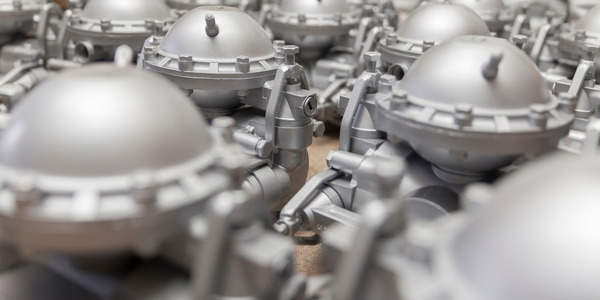Download PDF
The Thermal Management of Li-ion Battery Packs
Technology Category
- Analytics & Modeling - Predictive Analytics
- Functional Applications - Remote Monitoring & Control Systems
Applicable Industries
- Automotive
Applicable Functions
- Product Research & Development
- Quality Assurance
Use Cases
- Predictive Maintenance
- Machine Condition Monitoring
Services
- Software Design & Engineering Services
- System Integration
The Challenge
Given the long development cycle for vehicles, automobile manufacturers must plan their upcoming lines far in advance. With growing emission regulations and the rising cost of gas, full electric and hybrid vehicles are becoming more attractive and growing in market share. At the Fiat Research Center in Orbassano, the focus is on developing electric and hybrid vehicles using lithium and lead-acid batteries as well as supercapacitors. Fiat currently has several light trucks that run on electric drives, and the next application will be an electric version of the Fiat 500, which has been announced for the US market. The challenge lies in combining as many as 100 lithium-ion battery pouch cells into battery packs that generate the 350V needed while providing sufficient cooling and keeping the packs as small and light as possible. The maximum temperature differential among all the cells in a pack must not exceed 5 °C. If the temperature of the pack is too low, it limits the charge you can extract; if it is too high, it risks thermal runaway, leading to electrolyte emission, smoke, or fire.
About The Customer
Fiat, an established automobile manufacturer, is focusing on the development of electric and hybrid vehicles at its Research Center in Orbassano, near Turin, Italy. The company is working on integrating lithium and lead-acid batteries as well as supercapacitors into their vehicle designs. Fiat has already introduced several light trucks with electric drives and is planning to launch an electric version of the Fiat 500 for the US market. The research team, led by Senior Research Engineer Michele Gosso and coordinated by Antonio Fiumara, is responsible for developing power solutions for these electric and hybrid vehicles. Their work involves not only the design and integration of battery packs but also ensuring these packs are efficient, safe, and adaptable to various vehicle models.
The Solution
To address the challenge of cooling multiple battery pouch cells, Fiat's research team does not manufacture the individual lithium-ion battery cells but combines up to 100 of them into battery packs. They use COMSOL Multiphysics to study the surface distribution of heat and prefer convection air cooling. Their model divides each surface of the pouch cell into nine areas, corresponding to thermocouples on the cell itself. This allows them to examine the temperature distribution at various charge/discharge rates and verify the model's consistency with reality using thermocouples and infrared heat cameras. This approach provides invaluable information that cannot be achieved through other means due to the difficulty of embedding thermocouples in battery pouches. With the knowledge gained from the model, Fiat has been able to reduce the physical channels between the cells, cutting down on space and weight. This makes it easier to insert the battery pack into a larger variety of vehicles. Additionally, they determined that a less powerful fan was required, reducing costs. The model also helped cut design time by 70%, from 1,000 hours to roughly 300 hours. Future projects will look at extreme conditions, such as temperatures below freezing, leveraging the Joule heating effect and innovative design to solve charging difficulties in these conditions.
Operational Impact
Quantitative Benefit
Related Case Studies.

Case Study
Integral Plant Maintenance
Mercedes-Benz and his partner GAZ chose Siemens to be its maintenance partner at a new engine plant in Yaroslavl, Russia. The new plant offers a capacity to manufacture diesel engines for the Russian market, for locally produced Sprinter Classic. In addition to engines for the local market, the Yaroslavl plant will also produce spare parts. Mercedes-Benz Russia and his partner needed a service partner in order to ensure the operation of these lines in a maintenance partnership arrangement. The challenges included coordinating the entire maintenance management operation, in particular inspections, corrective and predictive maintenance activities, and the optimizing spare parts management. Siemens developed a customized maintenance solution that includes all electronic and mechanical maintenance activities (Integral Plant Maintenance).

Case Study
Monitoring of Pressure Pumps in Automotive Industry
A large German/American producer of auto parts uses high-pressure pumps to deburr machined parts as a part of its production and quality check process. They decided to monitor these pumps to make sure they work properly and that they can see any indications leading to a potential failure before it affects their process.









